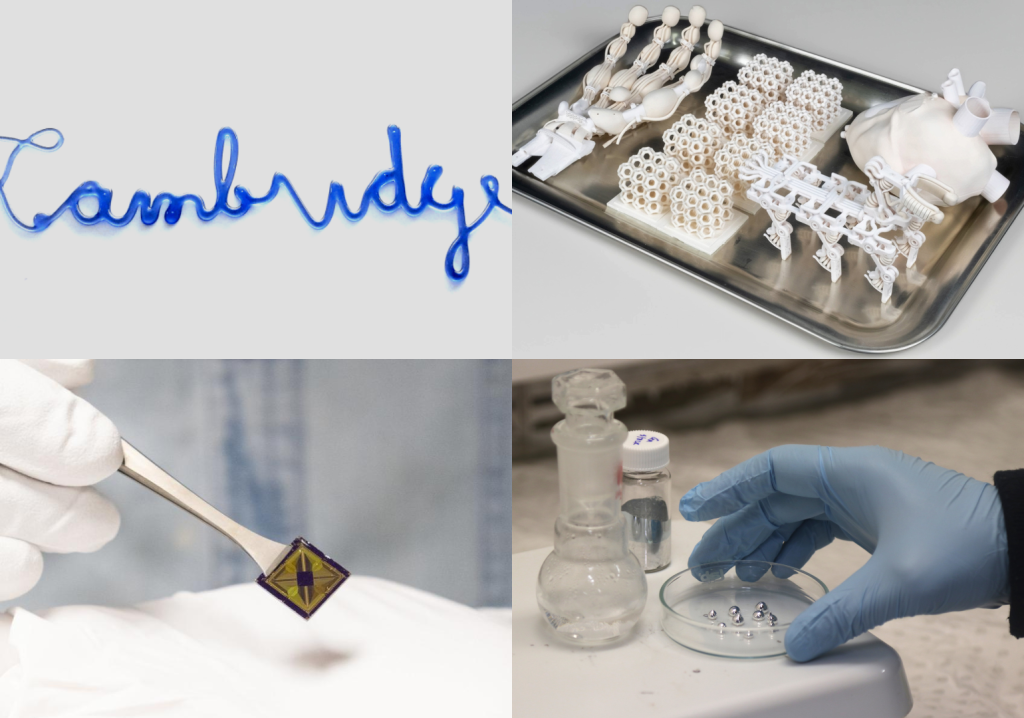In our first instalment of TechWatch for 2024, we explore drip painting, liquid metal catalysts, a self-monitoring printer and an electronic tongue.
Innovation in Australia and across the globe continues apace — here are four of the latest developments in tech and engineering.
Drip painting
Researchers at Harvard University have combined physics and machine learning to replicate the complex patterns of artist Jackson Pollock, who was known for his “drip painting” technique.
Drawing on the natural fluid instability that Pollock used in his art — in his case, by allowing paint to fall on a canvas from a height — the Harvard researchers were able to replicate a section of a Pollock painting.

“Pollock’s approach of throwing paint from a height meant that even if his hand was moving in a specific trajectory, the paint didn’t follow that trajectory because of the acceleration gained from gravity,” said postdoctoral fellow Gaurav Chaudhary.
“We wanted to develop a technique that could take advantage of the folding and coiling instabilities, rather than avoid them.”
The team controlled the falling liquid through deep reinforcement learning, which allowed the model to learn from its mistakes. Although the team used simple fluids, it could also use the technique for complex substances such as liquid polymers or foodstuffs.
Liquid metal catalysts
Engineers at the University of Sydney have developed liquid metal catalysts that hold out the possibility of producing needed chemicals in greener and less energy-intensive ways.
Solid-metal catalysts, which have been traditionally used in the production of such substances as plastics, fertilisers, fuels and feedstock, can require temperatures of up to 1000°C. Because liquid metals contain atoms that have greater freedom of movement, they can more easily participate in chemical reactions.
The University of Sydney team dissolved nickel and tin in a gallium-based liquid metal that melted at just 30°C.
“By dissolving nickel in liquid gallium, we gained access to liquid nickel at very low temperatures — acting as a ‘super’ catalyst,” said Dr Junma Tang. “In comparison solid nickel’s melting point is 1455°C. The same effect, to a lesser degree, is also experienced for tin metal in liquid gallium.”
Self-monitoring printer
A 3D-printing system developed at the Massachusetts Institute of Technology (MIT) can create complex devices that combine soft and rigid materials by observing itself fabricating the materials.
This is necessary because it uses droplets of resins that dry at different rates, making it impossible to indiscriminately smooth or cure them at the same time. The system instead scans the printed surface and adjusts in real time the amount of resin released.
It draws on two lasers, four high frame-rate cameras and 16,000 nozzles to finely control the details of its printing.
“Our key insight here was to develop a machine-vision system and completely active feedback loop,” said MIT Professor of Electrical Engineering and Computer Science Wojciech Matusik. “This is almost like endowing a printer with a set of eyes and a brain, where the eyes observe what is being printed, and then the brain of the machine directs it as to what should be printed next.”
Electronic tongue
An electronic sensor designed to detect taste is part of a broader effort to develop an artificial intelligence with emotional intelligence capabilities.
Designed by a team at the US’s Pennsylvania State University, the electronic “tongue” is a biomimetic version of the human organ that turns chemical data into electrical impulses using super-thin graphene-based chemitransistors. A molybdenum disulfide transistor that can remember past signals then processes the information, forming an “electronic gustatory cortex”.
“We used two separate materials because while graphene is an excellent chemical sensor, it is not great for circuitry and logic, which is needed to mimic the brain circuit,” said graduate research assistant Andrew Pannone.
While the team hopes to eventually mimic the 10,000 taste receptors on a human tongue, the system can currently detect the five primary taste profiles: sweet, salty, sour, bitter and umami.
